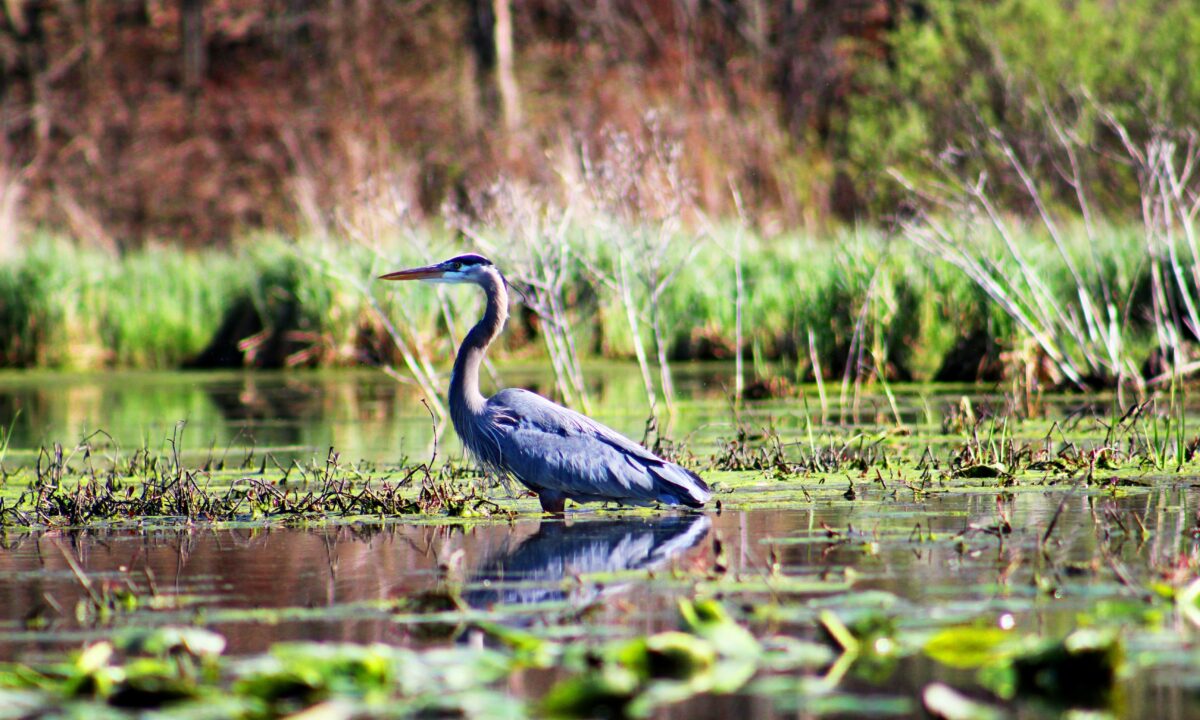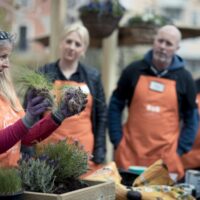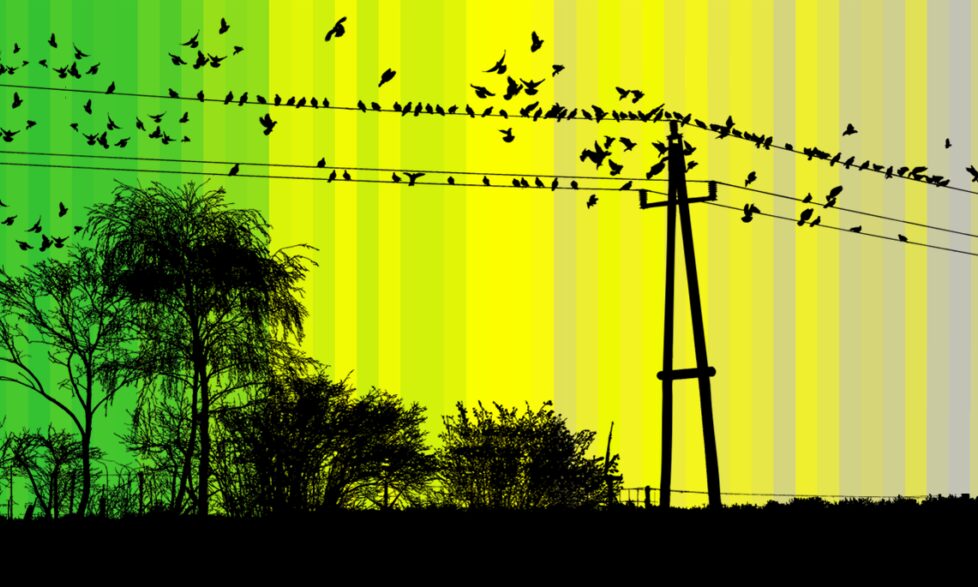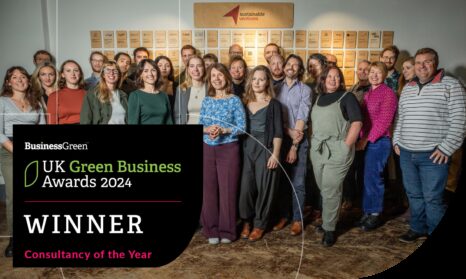How businesses can support the global goal to be nature positive
Clean air, water, and food are essential for our wellbeing. Yet, we are pushing earth’s systems beyond the point they can cope. Wildlife populations are in freefall – WWF reports a 69% decline in populations between 1970 and 2018 – while a quarter of plant and animal species are threatened by human action.
Beyond providing critical ecosystem services like fertile soils and pollination, over half the world’s GDP depends on nature. The World Economic Forum lists biodiversity loss as the third most severe global risk we face, after climate action failure and extreme weather. Climate and nature are two sides of the same coin: the UNFCCC makes clear that we can’t limit warming to 1.5C without ending deforestation.
Multiple players across academia, NGOs, the private sector and states are calling for the United Nations Biodiversity Conference COP15 to deliver nature its equivalent of the Paris agreement: a global goal to be “net nature positive by 2030 with a full recovery by 2050”. This means not just halting biodiversity loss, but reversing it. Becoming nature-positive means seeing an increase in indicators of biodiversity by 2030 compared to 2020, creating conditions that allow systems to flourish and fully recover by 2050.

Yet, the private sector is suffering from ‘carbon tunnel vision’. Recent analysis from CDP reveals far too few corporates have committed to action on nature – almost three-quarters of clothing and manufacturing companies are not measuring their impact on biodiversity – and those who have are not delivering their promises. Whereas climate champions rally behind net zero, nature has no ‘north star’ to align corporate ambitions. Unfortunately, there isn’t time for the natural world to repeat climate’s slow crawl up the corporate agenda.

How should businesses respond?
The Science Based Targets initiative is the industry gold standard on measurement and target setting for greenhouse gas emissions. Soon, thanks to its sister organisation the Science Based Targets for Nature (SBTN), we will have equivalent guidance for biodiversity, in oceans and freshwater, and on land too. Its initial guidance provides steps to help businesses understand their impacts and opportunities:
- Assess, interpret, and prioritise: Conduct a sector-level materiality screening to understand your impacts. SBTN’s sector-level screening tool can illuminate these. From this, prioritise your focus areas considering your impact, your ability to influence change, the state of nature in your value chain, local contexts, and the policy environment.
- Measure impacts and set targets: The Natural Capital Toolkit provides a library of sector-specific tools to help you measure your impacts and conduct a baseline measurement. Bear in mind that you may be able to make a start with data you already have, using the same metrics collected for greenhouse gas measurement. SBTN has published interim targets and actions to point organisations in the right direction while science-based targets are formalised, as well as an action framework, guiding businesses to ‘avoid, reduce, regenerate, restore, and transform’.
- Disclose strategy and progress: Bioregional, with hundreds of others, has joined Business for Nature’s call for mandatory nature-related disclosures by 2030, but companies must take voluntary action much sooner. The TNFD framework launching in 2023, as well as through CDP disclosures on climate, forests, and water, provide opportunities to do this. As well as contributing to sector-level visibility on impacts, organisations can assure investors of supply chain resilience.
Some businesses are already taking steps on this journey, and are helping to define emerging best practice in their sectors. This can mean exploring new tools and approaches – for example, asset manager ACTIAM partnered with Satelligence, a geodata-analytics company, to begin measuring and reducing deforestation.
Schneider Electric introduced its ‘Global Biodiversity Score’ in parallel to its GHG accounting, using the same data inputs on purchasing and raw material use required for a carbon footprint. This highlights how significantly climate change contributes to nature loss and allows Schneider Electric to identify value chain hotspots: for example, switching to recycled copper for components in electrical parts, and recycled wood for pallets and packaging.
To avoid environmental impacts before they occur, retailer Kering Group uses environmental profit and loss accounting, considering more than 5,000 indicators across different nature impacts: carbon emissions, water consumption, water and air pollution, and waste to understand how the origin of the raw materials, the country of sourcing, and manufacture impact the sustainability profile of a new product.
H&M Group uses an adapted version of the Biodiversity Impact Metric (BIM) to a similar effect. Though the BIM improves in accuracy with granular data, at its core the BIM requires only data on the commodity type, sourcing region, and quantity purchased to offer insights about biodiversity impacts in the supply chain.

And participants in the SBTN freshwater pilot are already able to share learnings. Drinks manufacturer Suntory used the Aqueduct Country Ranking, developed by the World Resources Institute, to identify areas of baseline water stress in its supply chain.
We cannot let the perfect be the enemy of the good: net nature positive by 2030 is a necessary goal, so organisations must act now to map and minimise their impacts.
Global supply chains are complex and can be confusing to navigate. However, we cannot let the perfect be the enemy of the good: net nature positive by 2030 is a necessary goal, so organisations must act now to map and minimise their impacts.
We have helped organisations to consider all aspects of sustainability holistically, including impacts on land, nature, and water, since 2002, as an integral part of our One Planet Living framework, as well as helping to elevate nature on the corporate agenda through training and engagement sessions.
Need help with your sustainability strategy?
Explore our full range of sustainability consultancy services, or get in touch via the form below to speak to our Sustainable Business team.
Image credits: top banner courtesy of biodiversitystripes.info and represents UK farmland birds: 55% decline 1970-2019. Global heating and biodiversity loss illustration, 1970-2018, courtesy of biodiversitystripes.info. Bee photo: Scotty Turner via Unsplash, Heron photo: Tyler Butler via Unsplash.







